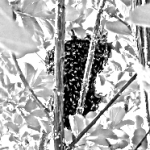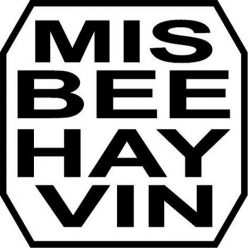
So you found a BIG ball of bees hanging around, now what? Well first, if it is in the Memphis, TN area send us an email using the form below.
Now here is why there is a BIG ball of bees…
Occasionally a hive of bees needs to move out and find a new home, sometimes this is because a new queen was hatched, or because something happened to their old home to make it undesirable. The bees eat their fill of the honey stored in the hive and then the female workers, male drones, and the queen all fly away to find a new home, but where? Along the way they stop and ball up in a tree or bush while scouts are sent out to look for a new home, the swarm usually only rests for 8 to 48 hours before moving on.
In the wild, swarms are usually a good thing, it is one way that bees multiply the number of hives, but in urban areas, they can be a problem when the bee find a new home in a place they are not welcome such as under the siding of a house. So this is why it is best to call us or another beekeeper, we will safely remove the bees for free and relocate them to a new, safe home on one of our farms where they will live happily ever after.
